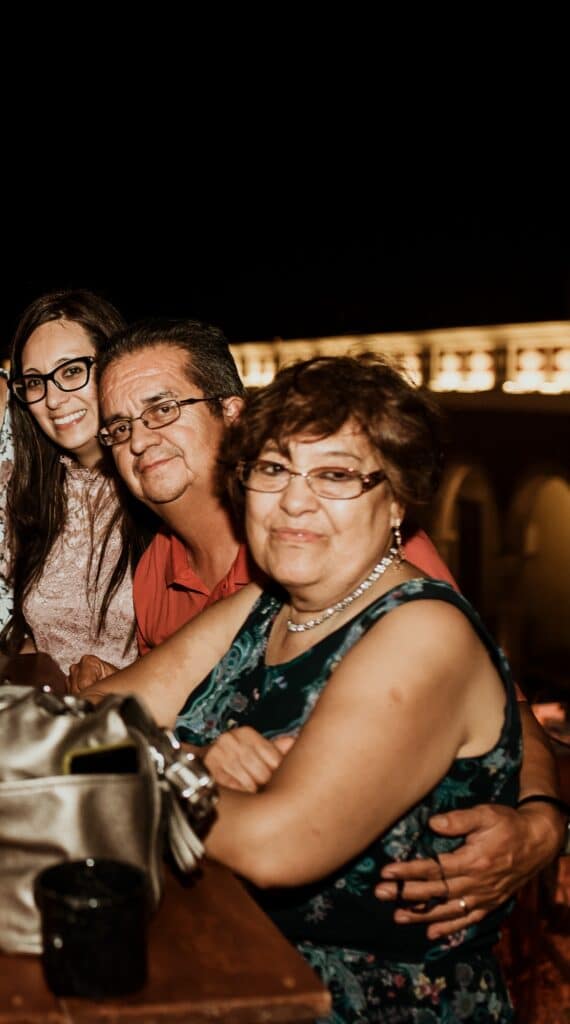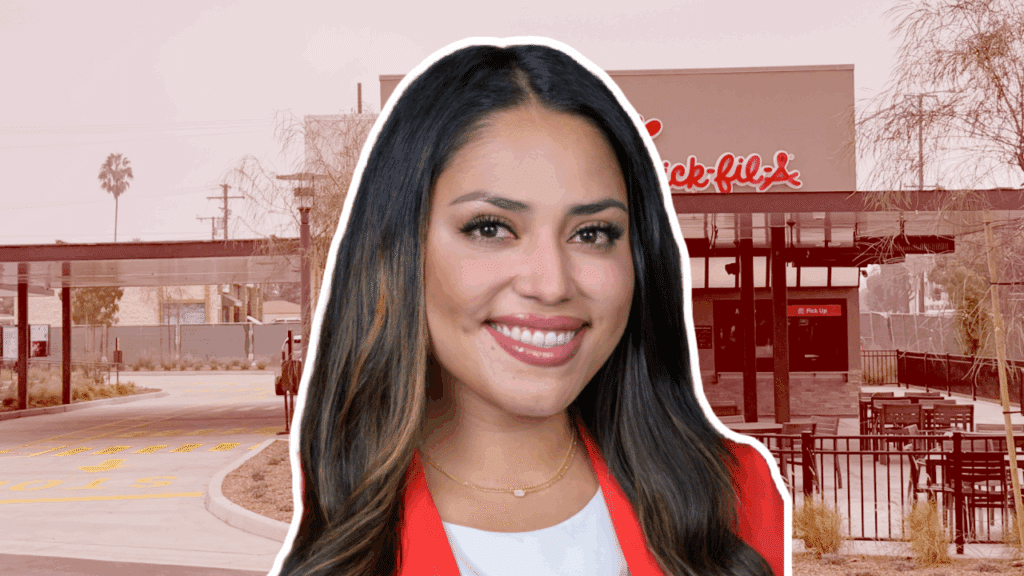How Latina Space Engineer Krystal Puga Is Changing the Game for Women in STEM
Very few people know what they want to be as a kid. Even fewer can transform those teenage passions into a successful profession. But Latina space engineer Krystal Puga did just that. She took her childhood interest in exploring space and her knack for engineering and combined them to carve out a space for herself in, well, space.
What began as an interest in STEM and participating in a 7th-grade science engineering competition has since transformed into a career as a Space Segment Systems Engineer at Northrop Grumman. Krystal Puga has worked at the multinational aerospace and defense technology company since graduating from college.
Her role has allowed her to contribute to the James Webb Space Telescope. She is currently researching the viability of living on the moon. Yes, she’s actually working on finding ways for human beings to live in space. And you thought your job was cool!

Krystal Puga learned her calling early on and spent her life working hard to achieve her dreams
Krystal grew up in the Central Valley of California, what she affectionately calls Cowtown USA. Her parents immigrated to the U.S. from Mexico in their early 20s, wanting to start a new life. Like so many other immigrants, they ended up in an agricultural community, which Puga grew up surrounded by.
However, from an early age, she knew that she wanted to do something more.
Despite a childhood surrounded by mostly corn and cows, Puga recalls feeling a deep desire to learn. She wanted to do more and found herself often looking up, wondering what else was out there.
So began her fascinating journey to studying space.
In middle school, Krystal Puga first looked through a telescope and was blown away by what she could see. “It was awe-inspiring to me that with a simple tool you can own, you could see other worlds,” she told FIERCE.
Later, in 7th grade, her science instructor introduced her to engineering. That was the first time she realized that she liked working with her hands and understanding how things work. Equally important, she understood you could combine those passions — that someone has to actually engineer things for space.
Of course, she still questioned whether or not she could be the one to do that role.

There was a need for space engineers, but did she have what it takes to pursue that path?
That same year, Puga wanted to participate in the Science Olympiad’s Mission Possible event. Unfortunately, a boys’ team was already competing at her school. She had to prove her skills and earn that slot if she wanted to compete. So, she enlisted the help of a friend to be her partner, and her father solicited the help of an engineer he worked with at a steel company.
It was when she went on to win the competition and beat the boys that Puga realized she was onto something. She and her friend went on to win the regional competition and secured third place at the state level.
That was Puga’s “aha!” moment. She realized that she wanted to be an engineer. To which her father, with the ultimate parental wisdom, replied, “Krystal, you already are an engineer.” That moment really stuck with her.

Despite obstacles along the way, support and passion guided her
A daughter of Mexican immigrants who only have a middle school education, Krystal Puga learned early on in her academic and professional journey that her path to success would not be easy and would be unlike the experiences of many of her colleagues. But her family always supported her dreams and encouraged her to stay the course, even when times were tough.
After high school, Puga was accepted to Embry-Riddle Aeronautical University in Florida. This was a unique opportunity in one of the best aerospace programs in the country. There, she could hone her engineering and space skills. At the time, Puga’s father was working as a truck driver. He drove them cross-country in his 18-wheeler to get her to college for orientation day. It took them several weeks, but they reached the east coast.

This was another moment Puga recalls when she questioned if she was in over her head to pursue her career path.
She was surrounded by more affluent students and families and felt very intimidated. She had a moment where she questioned things.”I thought I was an engineer already, and I had been doing well in school, but do I really belong here?” Puga worried. This was a prevalent fear that she had to overcome, and it took several years until she realized that she not only belonged but also thrived in her journey.
About six months before she graduated, Puga received an offer for a position at Northrop Grumman. This life-changing moment validated her choices and allowed her to achieve her dream of engineering tools to help people study the stars.
Her first job out of college was the job she dreamed of when she first looked through a telescope in 7th grade. She would be now working on the James Webb Telescope. Talk about hard work paying off!

One thing Krystal Puga learned is never to underestimate the power of hard work and perseverance
Krystal Puga recalls doing every kind of work you can imagine while working on the James Webb Telescope, from counting the tape wrapped around each fastener to developing and verifying systems to managing all the release mechanisms. “As I learned and became a better engineer and demonstrated that I could do this, I was given an opportunity to lead the release mechanisms responsible for deploying Webb,” she proudly told FIERCE.
We can learn so many valuable lessons from Puga’s journey as a space engineer. But finding a support system and trusting your passion are two of the biggest pieces of wisdom she wants to pass on to others.
“Surround yourself with like-minded people who are also trying to achieve something is critical,” Puga offers. She notes she only has a couple of fellow Latina engineers. Still, they often lift each other up and commiserate about experiences from when they were in college and beginning their academic journey.
“You’re going to have days when you question yourself, and you need that support system,” she adds.

In addition to support, you need to have passion
Even when you doubt yourself or times get hard — and engineering can be tough, she very honestly admitted — if you’re passionate, that will get you 90 percent of the way there.
Puga still reflects on her dad’s words when she was in 7th grade, reminding her that she was already an engineer. She also credits much of her success to her hardworking nature, a quality undoubtedly inspired by her parents and her Latina background. “There was a working hard mentality that was passed down by my parents to me because they had to work hard to make it in this country. I use that every day,” Puga says.
And hard work certainly pays off.
“I may not be the smartest person in the room, but I’m always the hardest working,” she told FIERCE. And Puga is determined not to let the things she doesn’t know drive her, both in her career and at home. “Don’t let anyone tell you you don’t know how,” she adds. Figure it out, find a way, and learn what you need to so you can solve that problem.

Don’t wait to pursue STEM; the time to start is now
For any Latinas interested in STEM or space engineering, Krystal Puga urges you not to wait. You can start today, and it doesn’t have to be complicated. Thanks to the Internet, you can access anything at home — look up information, search for local science competitions, do DIY science projects, find makers spaces. Just explore and learn, try (and fail), and figure out how things work. “Don’t wait until tomorrow; you can start today. There are resources available to you,” she adds.
Krystal Puga has now been at the Northrop Grumman for 15 years, and her latest venture is a human exploration project. She is investigating all things related to how humans can live in space. We’re talking about developing habitats for the moon, lunar terrain vehicles for the moon, and building space stations so that regular civilians (not just astronauts) can live in space.
Throughout all her efforts, Puga is dedicated to improving space communication with Latinos, making sure that she is focused on better communicating about STEM with her community. The world needs more Latinas in STEM, and a huge part of that mission is “finding the words to connect back to the Latino community” so that they’ll understand and be engaged.




